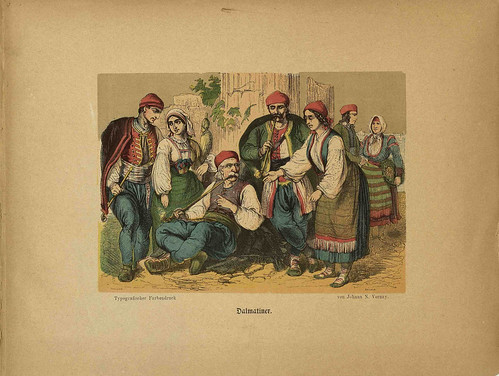

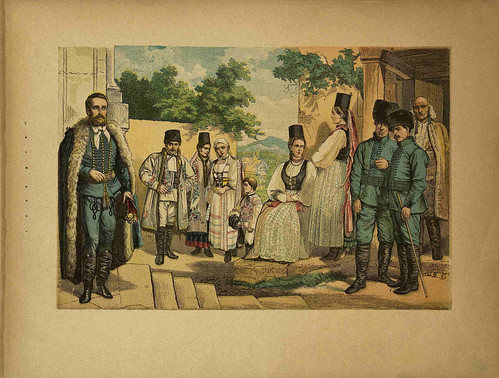
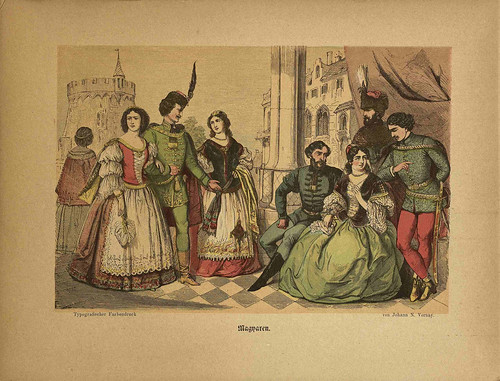
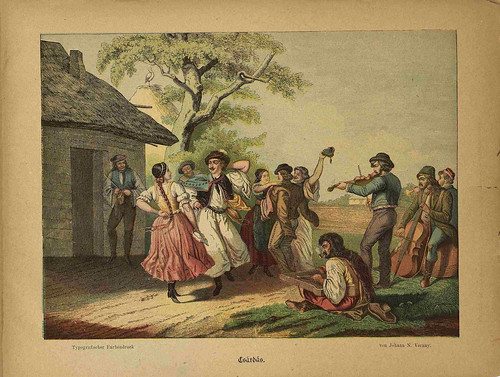
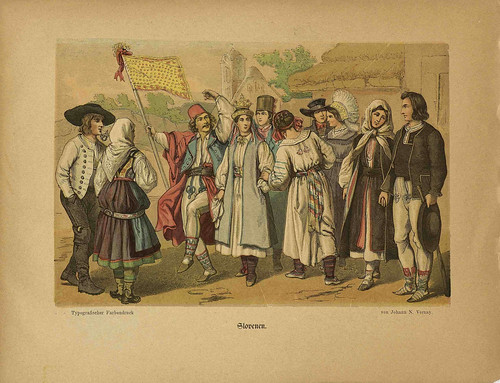
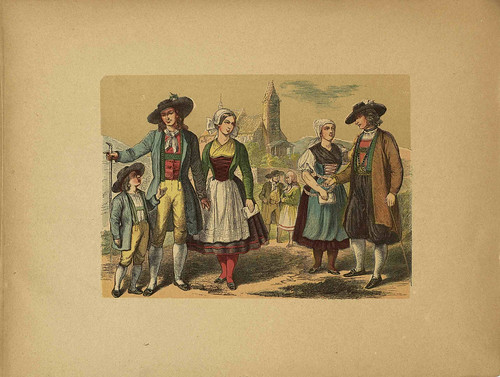
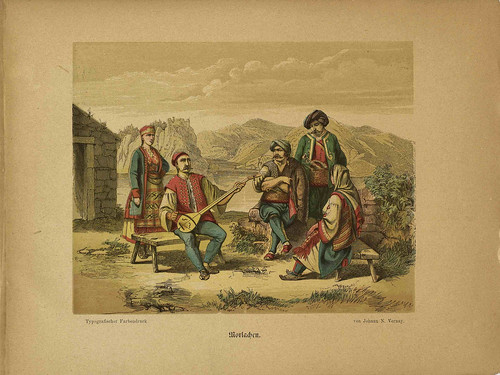
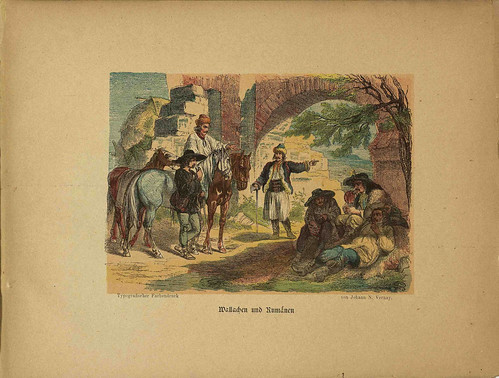
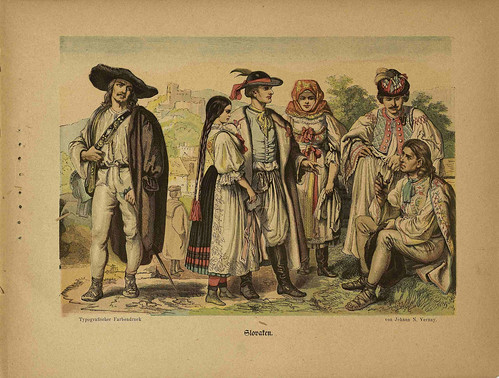


Among the small selection of digitised material at the Berlin Museum Art Library is an undated monograph printed by Johann Nepomuk Vernay depicting various peoples of the Austro-Hungarian Empire.
The Empire was a Hapsburg Monarchy, incorporating dual parliaments in two capitals (Vienna and Budapest) and existed from 1867 until disintegration as a consequence of WWI by 1918. The vast territory included ethnic groups from (today's) Bosnia, Italy, Czech Republic, Romania, Hungary, Poland, Serbia, Slovenia, Slovakia, Ukraine and Germany.
Judging from the active period of the Austrian printer, Vernay, the book was likely released between 1890 and 1918. The cover title is 'Oesterr:Ungarische Nationalitäten' but the instructional nature of the work is clear from the title page, 'Die Völker der österreichisch-ungarischen Monarchie : für die Jugend' (The Peoples of the Austro-Hungarian Monarchy: for youth).
I think all the book illustrations have been posted here, displaying traditional ethnic costumes from the majority of regions listed above : mouseover the images for - in most cases - the German name of the ethnic group depicted.
Via Archivalia.
Previously: costumes | ethnology.
skip to main |
skip to sidebar


analytics
Books~~Illustrations~~Science~~History~~Visual Materia Obscura~~Eclectic Bookart.

Contact | Who?
Recommended Blogs
Blog Archives
Resource Sites
- digital nz
- library of congress
- british library
- library france
- library holland
- library spain
- library portugal
- european library
- library australia
- collections canada
- digital poland
- nypl digital
- botanicus digital
- v&a collections
- britmuseum prints
- smithsonian search
- smithsonian galaxy
- f.a.m.s.i.
- casglu'r tlysau
- rumsey collection
- manuscript catalogue
- digital scriptorium
- cesg manuscripts
- swiss manuscripts
- pecia mss blog
- digital book index
- rare book room
- online exhibitions
- primary sources
- worldcat search
- library directory
- digital librarian
- intute resources
- warburg institute
- lexilogos links
- digiwiki links
- museum blogs
- book arts web
- culture archive
- conservation articles
- art-history timeline
- visual arts
- arts journal
- artcyclopedia
- ukiyo-e
- calligraphy megapage
- penmanship
- woodblock
- coconino
- alchemy website
- health hist. img-banks
- health history links
- history network
- new advent


















5 comments :
I believe the Csardas illustration refers to the dance being performed, not to the people in it.
A nice find nonetheless.
Jos.
I'm convinced you have a spy camera in my work space. While not exactly the same book, I'm fixing vol. 3 of The Earth and Its Inhabitants which includes great maps and lovely engraved illustrations of the costumes of the people of Hungary (and other European countries).
The author is pretty interesting himself, being an outspoken anarchist as well as decorated geographer.
You forget to mention Croatia! At least 3 of the shown costumes origin from croatia. By the way, Croatia was part of the hungarian crown since 1102 and equal to Hungaria till the late 15th cent. when it was more and more percieved as a part of the Hungarian Kingdom in stead of being a wholly different ethnic group with a independet history. As the hungarian crown 1527 became part of the austro-hungarian empire croatia, slavonia and dalmatia were mentioned separatly in the titels of the Emperor.
Greetings
My apologies Ingrid. No excuses. Normally I would seek a special dispensation because trying to work out historical dimensions for the countries of the former Yugoslavia is a unique breed of difficult; but in this case, it was simply because I didn't read the map thoroughly enough! Thanks.
You're forgiven^^
I enjoy your blog very much and would love to discuss some of the terrific things that are shown here in detail with you.
Continue with your great work!
Post a Comment
Comments are all moderated so don't waste your time spamming: they will never show up.
If you include ANY links that aren't pertinent to the blog post or discussion they will be deleted and a rash will break out in your underwear.
Also: please play the ball and not the person.
Note: only a member of this blog may post a comment.